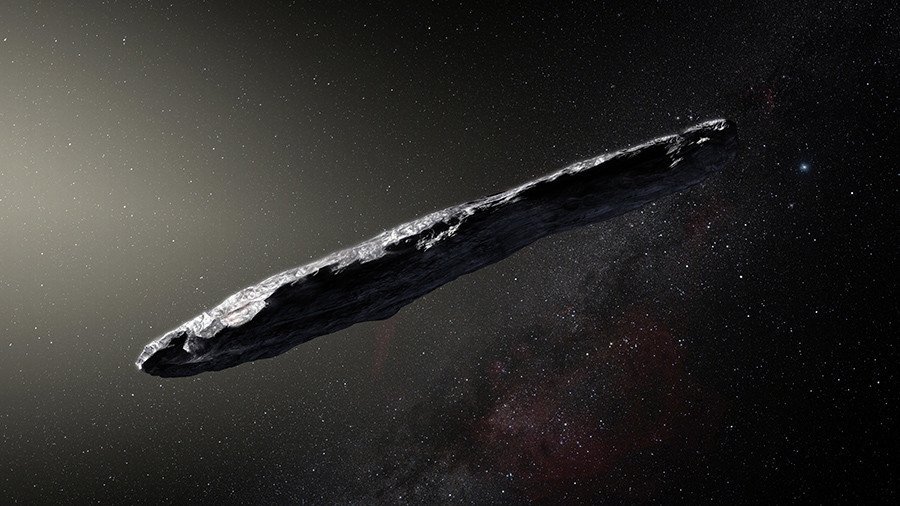Aliens not behind mysterious space object lurking in our solar system

The cigar-shaped object that was first spotted in our solar system last October was a natural body from another star system, scientists say. The mysterious rock had even been scanned for technology in case aliens were behind it.
The presence of ‘‘Oumuama’ in our corner of the galaxy had puzzled scientist and space nerds alike since it was discovered. It is the first such object from outside of our solar system to be sighted by humans.
Now, scientists from Queen's University, Belfast have solved the mystery and even pieced together a profile of the strange visitor. The team, which also includes researchers from a host of other universities, measured the way ‘Oumuamua reflects sunlight and found that it was similar to icy objects covered with a dry crust.
According to the scientists, this is because it has been exposed to cosmic rays – potentially for billions of years – and this has created an insulating, organic layer on the space-rock’s surface. This insulating layer could even have protected the organic material as ‘Oumuamua flashed some 23 million miles away from our sun, heating the object to over 300 degrees centigrade.
“We have discovered that the surface of ‘Oumuamua is similar to small solar system bodies that are covered in carbon-rich ices, whose structure is modified by exposure to cosmic rays,” said study lead Alan Fitzsimmons.
“We have also found that a half-meter-thick coating of organic-rich material could have protected a water-ice-rich, comet-like interior from vaporizing when the object was heated by the sun, even though it was heated to over 300 degrees centigrade,” he added.
Observing ‘Oumuamua, named after the Hawaiian word for “messenger,” while it was still within reach of the planet’s largest telescopes, allowed the team an excellent opportunity for study. They found that the elongated traveler was the same color as some of our solar system’s icy minor planets – the implication being that distant solar systems also have minor icy planets lurking at the edges.
“We’ve discovered that this is a planetesimal with a well-baked crust that looks a lot like the tiniest worlds in the outer regions of our solar system, has a greyish/red surface and is highly elongated, probably about the size and shape of the Gherkin skyscraper in London,” study author Michele Bannister said.
“It’s fascinating that the first interstellar object discovered looks so much like a tiny world from our own home system. This suggests that the way our planets and asteroids formed has a lot of kinship to the systems around other stars,” she added.
The research was published on Monday in the journal Nature Astronomy.














